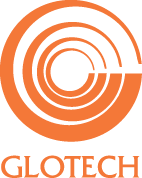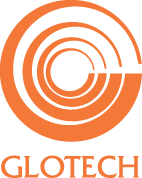
Statement of Work
This Statement of Work (SOW) is intended to outline the general requirements required of contractors under the contract. Specific details of task assignments, deliverables, documentation, training, applicable government/department/industry standards, etc., will be provided within individual task orders.
The contractor, acting as an independent contractor and not as an agent of the government, shall furnish all materials, personnel, facilities, support and management necessary to provide the services and solutions as set forth below in accordance with the Statement of Work. The geographic scope of this requirement includes the Continental United States (CONUS) and Outside the Continental United States (OCONUS).
Each of the task areas described below identifies examples of the types of services that may be included under each task area. The examples are not exhaustive, and other IT services, as required, may be associated with the task areas defined in this statement of work.
Task Area 1 specifically provides examples of solutions and services pertaining to biomedical research, health sciences, and healthcare. However, all other task areas may be used to support a health-related mission.

Task Area 1 – IT Services for Biomedical Research, Health Sciences, and Healthcare
The objective of this task area is to support Biomedical Research, Health Sciences and Healthcare by performing studies and analyses and providing operational, technical, and maintenance services for the systems, subsystems, and equipment, some of which interface with, and are extensions to, information systems throughout the federal government. A comprehensive, but not limited, sampling of work to be performed under this task area is shown below:
- Health Sciences Informatic and Computational Services
- Health Communication Support Services and Enhancements to Facilitate Integration and Data Exchange at the Federal, State, and Local Level
- Integration of Health Systems Across Federal Agencies and Public and Private Healthcare Systems
- Modernization and Enhancement of Existing Health IT Legacy Systems
- Automation of Administrative and Clinical Processes
- Biomedical Information Services
- Biomedical Modeling, Visualization, and Simulation
- Biosurveillance and Disease Management Support
- Scientific Computing Services
- IT Clinical Support Services
- Telemedicine (e.g., mobile health/mHealth)
- Healthcare Payment Processes and Fraud and Abuse in Medical Claims
- Health Emergency Preparedness and Response to Include IT Support for Epidemic and Bio-Terrorism Simulations, Emergency Response Training, Exercise Support, etc.
- Security of Healthcare and Biomedical Research Systems
- IT Service Management
- Healthcare Systems Studies
- Natural Language Processing Software and Services (Biology/Medicine Focus)
- Medical Computer-based Training
- Standards Development for Health IT Services
Task Area 4 – Outsourcing
The objective of this task area is to provide the Information Technology (IT) infrastructure and IT services required to assume management and operations of government IT resources and IT business functions. A comprehensive, but not limited, sampling of work to be performed under this task area is shown below:
- Program Management
- Management of Call Centers
- Network Operations and Web Management Support
- Leasing of Hardware and Software
- Tools and Applications (including Application Service Provider)
- Hardware/Software Maintenance
- Transition Planning
- A-76 Studies Specific to IT Operations or Support
- Data Base Administration and Data Storage Management
- Backup and Recovery Services System Console Operations
- Production Control and Management
- Asset Management (including Radio Frequency Identification [RFID] Tracking)
- IT Acquisition Management
- Desktop Computing as a Unified Service
- Managed IT Services Support
- IT Impact Analyses
- Workflow Management
- Implementation of Standards (e.g., International Organization for Standardization (ISO) 9000, Capability Maturity Model Integration (CMMI), IT Services Management)
- Solution Leasing
- Software-as-a-service (SaaS)
- Cloud Computing
Task Area 5 – IT Operations and Maintenance
The objective of this task area is to support the operation and maintenance of IT systems, keeping IT systems viable with supported vendor releases or off-the-shelf applications software upgrades. Operations and maintenance on IT systems shall include all software and hardware associated with mainframes, client/server, web-based applications, and networking. A comprehensive, but not limited, sampling of work to be performed under this task area is shown below:
- Operational Support
- Software Maintenance and Upgrades
- Telecommunications Maintenance (Data, Voice, Images, including Wireless)
- Infrastructure Management Services (IMS)
- Configuration Management
- Network/Hardware Support
- Help Desk/IT Support
- Resource Management
- Backup and Recovery Management
- Installation, Configuration, and Tuning
- Electronic Software Licensing Services including license: deployment, management, tracking, upgrading, etc.
- System Management
- IT Training
- IT Operation and Maintenance Planning
- Data Quality Management
- Transformation Services
- Continual Service Improvement
- Balanced Scorecard for Operations
- IT Infrastructure Optimization
Task Area 7 – Critical Infrastructure Protection and Information Assurance
The objective of this task area is to support the protection of critical infrastructure, assurance of agency information, and operations that protect and defend information and information systems by ensuring confidentiality, integrity, availability, accountability, restoration, authentication, non-repudiation, protection, detection, monitoring, and event react capabilities. A comprehensive, but not limited, sampling of work to be performed under this task area is shown below:
- Cyber Security
- Critical Infrastructure Asset Identification and Configuration Management Databases
- Information Assurance of Critical Infrastructure
- Risk Management (Vulnerability Assessment and Threat Identification)
- Facility Protection Planning
- Information Systems Security
- Security Operations Center Development and Operations Management
- Application Security
- Disaster Recovery
- Critical Infrastructure Continuity and Contingency Planning
- Incident Response Planning and Execution
- Security Certification and Accreditation
- Training and Awareness Programs
- Exercises and Simulation
- Federal Information Security Management Act (FISMA) Implementation Support
- Health Insurance Portability and Accountability Act Implementation Support
- Cryptographic Support and Services
- Record Management
- Public Key Infrastructure
- Trusted Internet Connections implementation
- Security Review and Analysis of Automated Information Systems
- Identity Management and Assurance
- Intelligent, Automated Data Collection and Analysis
- IT Forensics and eDiscovery
Task Area 10 – Software Development
The objective of this task area is to develop customized software applications, database applications, and other solutions not available in off-the-shelf modular software applications. A comprehensive, but not limited, sampling of work to be performed under this task area is shown below:
- Requirements Analysis, Design, Coding, and Testing
- Production Deployment
- Application Prototyping
- Multimedia Software for Patient/Staff Education
- Program Evaluation Software
- Administrative and General Decision Support Software
- Business Intelligence and Analytics
- GIS-Enhanced Planning and Program Evaluation Software
- Web 2.0 Development and Management
- Database Development and Management
- Clinical Protocol and Quality Assurance Decision Support Software


No Comments
Sorry, the comment form is closed at this time.